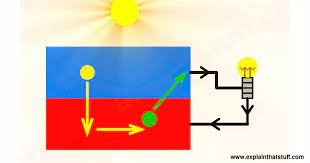Last Updated on January 30, 2024 by Asfa Rasheed
In the wake of natural disasters and emergencies, effective communication is pivotal. Traditional communication networks often falter under such extreme conditions, leaving rescue operations and relief efforts in dire straits. This is where solar communication systems come into play, standing as a beacon of hope and efficiency in the darkest of times.
Table of Contents
The Necessity of Reliable Communication During Disasters
During disasters, communication systems face two main challenges: power outages and infrastructure damage. Earthquakes, floods, and hurricanes can devastate power lines and communication towers, disrupting the flow of vital information. Here, the resilience and sustainability of solar-powered communication systems become invaluable.
What are Solar Communication Systems?
A solar communication system harnesses the power of the sun to provide uninterrupted communication channels. These systems are designed to be robust and autonomous, requiring minimal maintenance. They include solar panels, batteries for energy storage, and communication technologies like satellite phones or radio transceivers, all powered by solar energy.
The Advantages in Disaster Scenarios
- Uninterrupted Operation: Solar systems are not reliant on the traditional power grid, ensuring they remain operational even when other systems fail.
- Quick Deployment: They can be rapidly deployed to affected areas, providing immediate communication channels for rescue and relief operations.
- Durability: Built to withstand harsh conditions, these systems can endure the extreme weather events often associated with natural disasters.
- Eco-Friendly: By using renewable energy, these systems reduce the carbon footprint of disaster management operations.
Real-World Applications
In recent years, solar communication systems have proven their worth in various disaster-hit regions. For instance, after a major hurricane, solar-powered radios enabled first responders to coordinate their efforts effectively. In another scenario, solar-powered satellite phones provided a lifeline for communities cut off from the rest of the world.
Integration with Existing Emergency Protocols
Integrating solar communication systems into existing emergency response protocols can enhance the overall effectiveness of disaster management. Training first responders in utilising these systems and incorporating them into disaster drills and simulations can ensure a more coordinated and efficient response.
The Future of Disaster Communication
As technology advances, we can expect to see more innovative applications of solar energy in emergency communication systems. These might include drone-based systems for aerial surveillance and communication, or more advanced, compact solar-powered devices for individual responders.
Final Thoughts
In an era where natural disasters seem to be increasing in frequency and intensity, the role of solar communication systems in disaster management and emergency response cannot be overstated. By harnessing the power of the sun, these systems provide a reliable, sustainable, and effective means of communication when it’s needed most. Their integration into disaster management strategies is not just a technological advancement, but a step towards a more resilient and prepared society.
















